SIG Sauer is one of the most respected and prevalent manufacturers in the world of modern small arms today, and has long supplied military and police forces the world over with handguns and rifles that are legendary for their endurance and reliability. They also so happen to be makers of this author’s preferred pistol, the iconic P226.
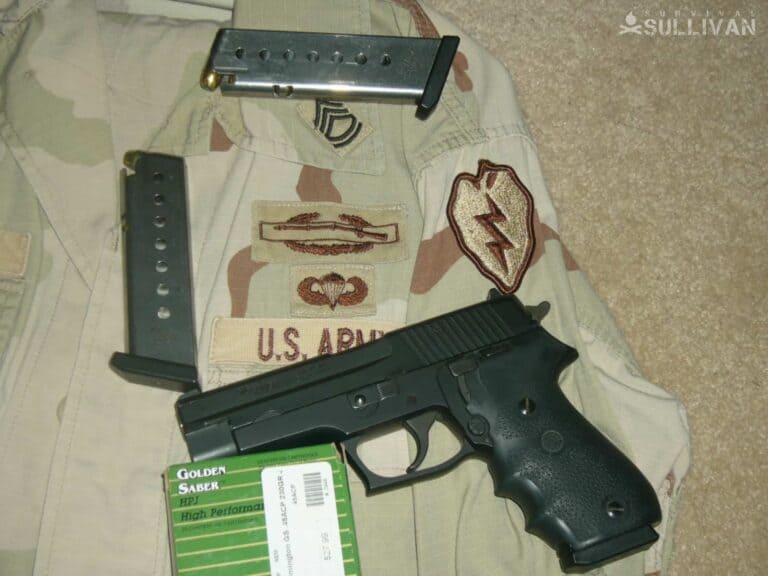
Most recently SIG Sauer has attained the high accolade of having one of their latest polymer framed striker fired handguns, a variation on the P320, selected as the U.S. Army’s new M17 Modular Handgun System, supplanting the long running issued sidearm, the Beretta M9.
In honor of this achievement, I’ll be presenting you with a list of what I consider to be “Sig’s” best handguns through the ages.
SIG Sauer? SIGARMS? SIG Who?
Before we get to our list, it might be beneficial to clarify exactly what company I am talking about, as sorting which international division of SIG is responsible for what gun.
This is far from an easy telling, the companies once known as SIG Sauer GmbH (founded in 1976 as a partnership between SIG, an industrial company of Switzerland and J.P Sauer and Sohn, a firearms and machinery company of Germany) has been sold, separated, bifurcated and otherwise shuffled around so often it is tough to hash out who is a subsidiary of who.
Complicating matters is its U.S. based separate company, SIGARMS, originally founded in 1985 to import those awesome, badass Swiss-German wonderpistols. But since 2007 SIGARMS has been known as SIG Sauer, Inc., and completely organizationally separate from SIG Sauer GmbH.
Now, SIG Sauer GmbH also went through its own reorganization when SIG, the Swiss part of the company, sold the firearms subsidiary, SIG Arms AG to L&O Holding, also of Germany, who then promptly renamed it Swiss Arms in an effort to confuse literally the entire gun world.
Furthermore L&O Holding is the current parent company of SIG Sauer GmbH. Henceforth I will refer to all guns manufactured by any of these diverse firms as “Sigs” so I don’t go completely mad and drive all you fine readers away.
Confused? Me too, but I will tell you this: Sig has long made excellent guns, both here in the U.S. and abroad in Europe, and though they have had their ups and downs, you can generally count on most pistols that have their rollmark on them.
Notes
Among pistol cognoscenti and Sig aficionados in particular, Sig pistols fall into one of two broad categories: German-made and American-made, the former, earlier guns being far more desirable than the latter thanks to some pretty serious quality-control and quality-assurance hiccups in the 2000’s from the American-based company.
The early German Sigs featured folded steel slides, and while not as nice looking were and are rightly famous as reliable pistols.
This is not to say the American guns are not good: your intrepid author has an American made P226R made circa 2007 that has been unquestioningly the finest handgun I have ever owned, and I have shot the living daylights out of this gun.
Tens and tens of thousands of rounds with only routine maintenance and part replacement and nary a hiccup.
Coming from a diehard SIG Sauer fan since about the age of 12, if I could grow to love and trust the American Sigs, you can too.
In the following list of pistols, I will make notes on where appropriate on the era and country of origin of the pistols so you can get a broad sense of where it falls in the lineage of the company.
This is complicated because some earlier designs originally produced (and in some cases, still produced) in Europe, now updated, are still offered and produced for U.S. consumption in the U.S.
Take for instance the P226, a legacy gun that is updated with a rail and produced domestically. You will hear Sig fans refer to an “American 226” and a “German 226” as shorthand to denote country of manufacture and, thus, era of production. Don’t get too caught up in all that, it will be clear enough.
Enough corporate archaeology! Let’s get to the guns!
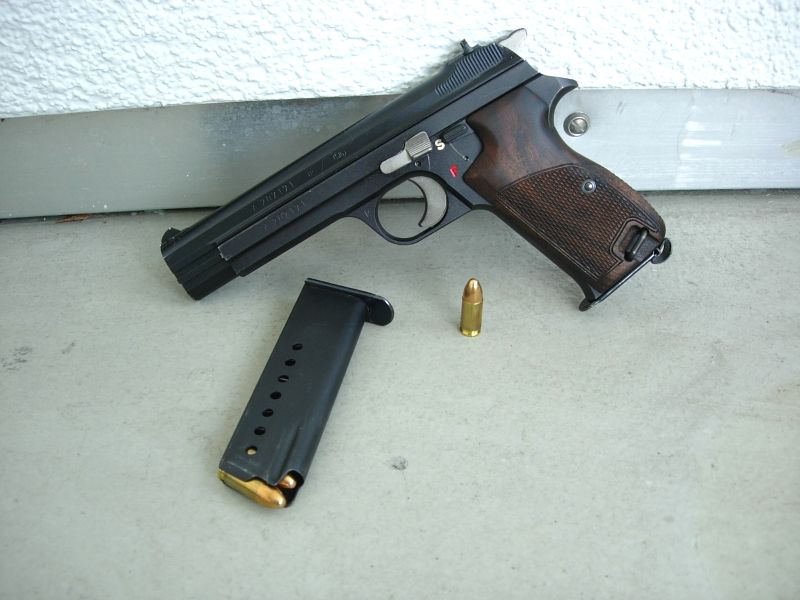
SIG P210
Technically a SIG, not SIG-Sauer product, but I am including it on a technicality because the gun has been reintroduced today and the lineage is established. Plus, hey, it’s my article and my island.
The grandpappy to all SIG service pistols, and one with a reputation for exquisite build quality and hair-splitting accuracy, the single action P210 was adopted and used by the Swiss Army from 1949 to 1975 as the P49, and is surprisingly still in service with the Danish military today.
This is without question one of the most well made, expensive, durable and accurate service handguns of all time, with both the slide and frame being machined from solid steel.
These original P210’s are highly valued among collectors and target shooters for their frightening accuracy and shooting characteristics, and were made in several variants. While they have been reintroduced by the U.S. based SIG-Sauer, they do not have the quality, soul or panache of the originals. An absolute legend of a handgun.
SIG Sauer P220
The Swiss Army’s replacement of the mythical P210 came in 1975 in the form of this righteous and excellent handgun. Known as the P75 in the Swiss military, this 9mm DA/SA gun was a radical change from the P210: this handgun made use of an alloy frame and stamped steel slide.
Much lighter, cheaper to manufacture and arguably easier to maintain than the P210 it supplanted, the P220 nonetheless would come to be regarded as an excellent handgun in its own right.
After making its way to the U.S. first in 1977 as the Browning BDA with the then typical heel magazine release of European preference offered both in 9mm, .38 Super and the soon to be standard chambering of .45 ACP, the P220 would not truly come into the limelight until later brought to the U.S. by SIGARMS chambered in standard .45 ACP with a mag release button located in typical American fashion.
The P220 Americans know and love is the progenitor of the entire classic Sig P-series pistols, and features all of the design hallmarks they are famous for: DA/SA operation, the traditional frame mounted decocker and slide release arrangement with the slide release at the rear, and a four point passive safety system that remains one of the best examples of its kind for hammer fired pistols today.
As with most classic SIG Sauer pistols, early European made guns featured a folded steel slide with a pinned-in breech block. Later U.S. production models featured a milled stainless steel slide with integral breechface. This is the typical progression of P-series pistol manufacture.
SIG Sauer P228
Increasing capacity has always been of interest to shooters and firearms designers, so hot on the heels of the P220 came the P226, essentially the same gun as the classic, 9mm P220 only with a wider frame to accommodate a double stack magazine holding 15 rounds. The P226 would go on to see several guns descended from it, namely the P228, a compact double-stack gun holding 13 rounds.
The P228, especially the German made guns, are greatly loved for their excellent handling and shooting characteristics: superb balance, ample capacity and very good accuracy. Combined with SIG Sauer pistols’ well earned reputation for excellent reliability, they had a real winner on their hands.
Ideal for concealed carry, law enforcement and plainclothes work, the P228 has been adopted by many militaries and agencies around the world, including the U.S. military as a supplemental compact pistol serving alongside the M9 for investigators and other personnel who do not require a fullsize handgun. Both the P228 and M9 are being replaced by SIG Sauer’s newest striker fired handgun, the modular M17.
Though the sun is beginning to set on this compact double-action dream, they remain one of the best shooting and handling pistols of all time, bar none.
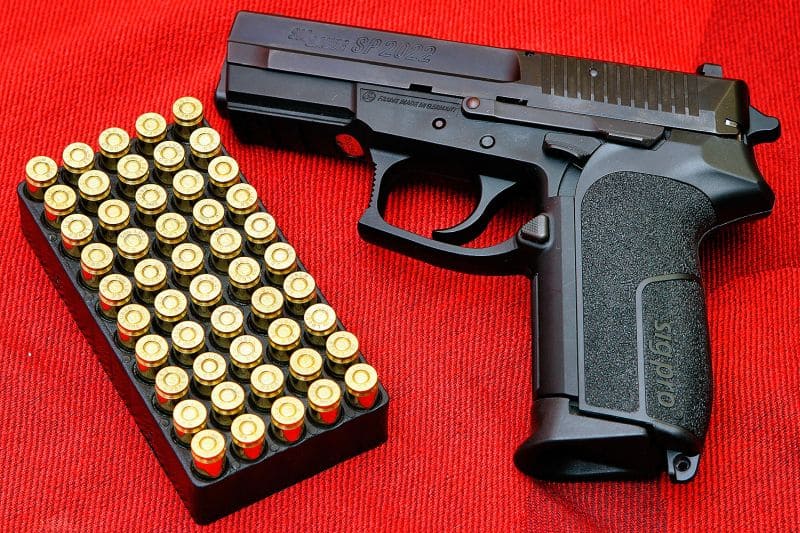
SIG Pro SP 2009 / SP 2340 / SP 2022
One of the first U.S. designed Sigs, and SIG Sauers first polymer framed handgun, this line of pistols has a list of other “firsts” attributed to it.
When the market started to get really competitive with polymer handguns in general, and every company that cared to get on the right side of the polymer revolution was churning out plastic fantastics with more or less innovation, SIG Sauer released a handgun that was in many ways the archetype of polymer handguns to follow.
The SIG Pro 2340 was intended for the law enforcement market, and first released in .40 S&W, the then darling cartridge of the LE world. SIG’s own .357 SIG chambering came alongside shortly thereafter.
What made this gun so unique at the time are features that are nearly always standard today: an integral, proprietary accessory rail for a line of lights and lasers, a reversible mag catch for left handed users as well as a quick-change wrap around plastic grip shell to allow the pistol to be adapted for different hand sizes.
While this seems laughably common today, it was the subject of much ado in 1998. A year later, sig re-released the gun in 9mm Para. as the SP2009.The controls, shape and performance of this pistol will be very familiar to anyone acquainted with the P220, P225, P226 etc., but internally there are many differences, and no interchangeable parts.
Often derided as the “cheap Sig” the SIG Pro stands completely on its own merits as a reliable and rugged pistol. While the gun saw limited success in the U.S. LE and commercial sectors, it did well enough abroad that it remains in production today, and was most famously adopted with some revisions (notably a standard Picatinny rail) as the SP2022 by the French National Police and French Customs with an order to the tune of 250,000 pistols.
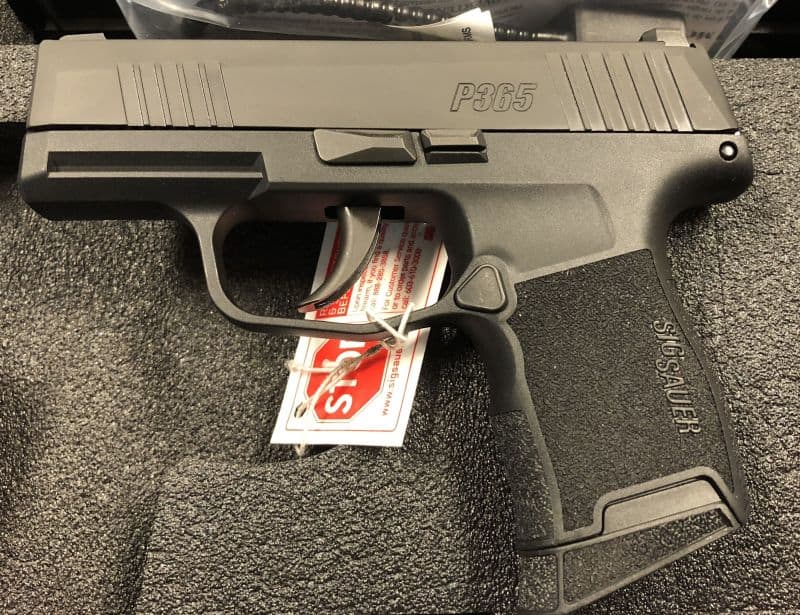
SIG Sauer P365
Following on the controversial but successful P320 series, SIG Sauer saw fit to introduce a slick, lightweight compact gun for concealed carry and backup gun use. This pistol, the striker-fired P365, replaces its earlier and similar DAO cousin the P290 in SIG’s lineup, and is already earning a reputation as a compact handgun to beat.
Chambered in 9mm with an expansive 10 round (optionally 12 round) magazine for its size, the P365 offers a compact handgun that will shoot as well or better than many competitors’ fullsize handguns.
Also of interest are a few design choices that were cribbed from SIGs earlier handguns; the magazine release is triangular in shape, borrowed from its larger cousin the P320, who inherited the peculiar shape from the previously discussed SIG Pro line.
The P365’s striker mechanism is virtually identical to the P320’s, and after the debacle resulting from that gun’s highly publicized lack of 100% safety when dropped, the P365 was rigorously drop tested from every conceivable height and angle to ensure no such oversight would plague this new polymer pistol.
Also interesting is the P365’s lack of a Picatinny rail; instead, it features two slots on either side of the dust cover to allow attachment of a new series of proprietary lights or lasers.
The wisdom of this is questionable since universal attachment methods keyed to Picatinny rails have long been standard, but time will tell if the marginal improvements to overall size and smoothness will be worth the hassle for users.
At any rate, the P365 represents SIG’s newest paradigm for their compact offerings. With the retirement of the P239 and replacement of the P290 if you want a compact gun optimized for concealed carry the slim, slick polymer P365 is the way to go.
Conclusion
SIG Sauer has been a firearms force to be reckoned with since the middle of the last century, and they show no signs of slowing down, especially when it comes to handguns.
From their classic steel and alloy P220 to the leading edge of the polymer revolution with the SIG Pro, these handguns will serve as some of the best handguns to be had for years to come.
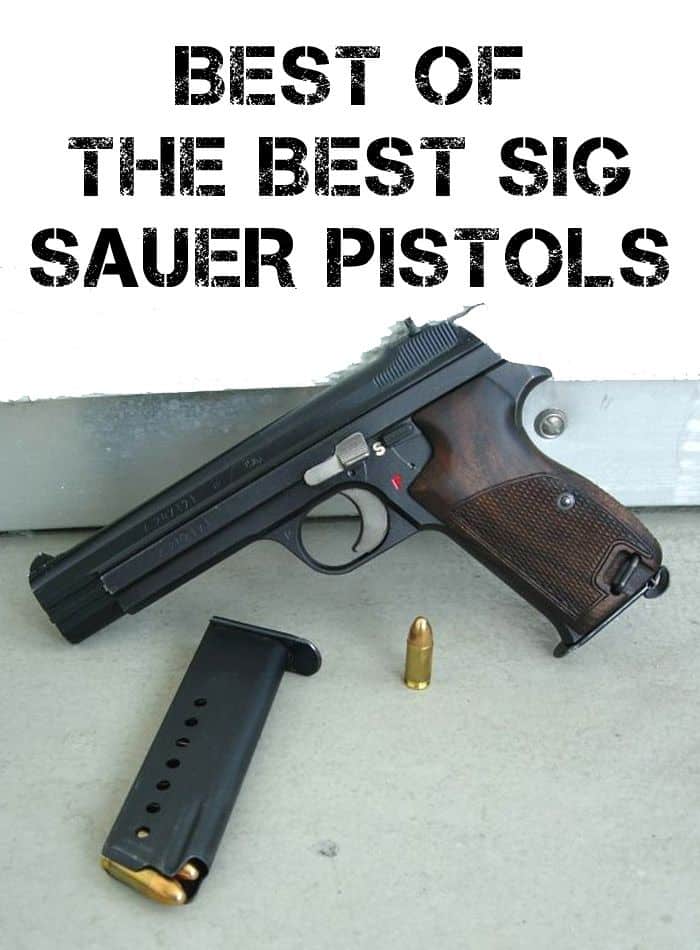
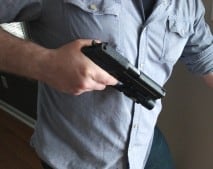
Charles Yor is an advocate of low-profile preparation, readiness as a virtue and avoiding trouble before it starts. He has enjoyed a long career in personal security implementation throughout the lower 48 of the United States.

SIG only if you like the grip angle. Had some SIG’s and sold them just did not like the feel of there grip angle
I love my P-228. I’ve had it since 1991 when my police supervisor’s union bought one for each member. Our issue duty weapons were the P-226, which I loved too. I’m thinking I put easily over 15,000 rounds of ammo through my P-226 without any kind of unintentional stoppage. It would shoot any 9mm I put in it, same with my P-228. Both models were German made guns.
The P-226s operated flawlessly for every member of the department, whether in shootouts or on the range, during the 9-years we had them prior to my retirement. I was the department rangemaster, so I was well familiar with how they performed.
The only problem we had with the P-226 was small-handed officers had some problems maintaining a good grip and getting a good trigger pull. That was solved by installing the short triggers SIG had for that very issue.
My old department still uses SIG P-226 9mm, but newer models. After I retired, the chief then (who loved .45 cals), transitioned the department to P-220 .45. That didn’t last long because most officers did not like the .45 and couldn’t handle them well. Then they transitioned to .40 cal P-229. Again, most officers weren’t very happy and eventually went back to the 9mm P-226. No more complaints, I’m told.